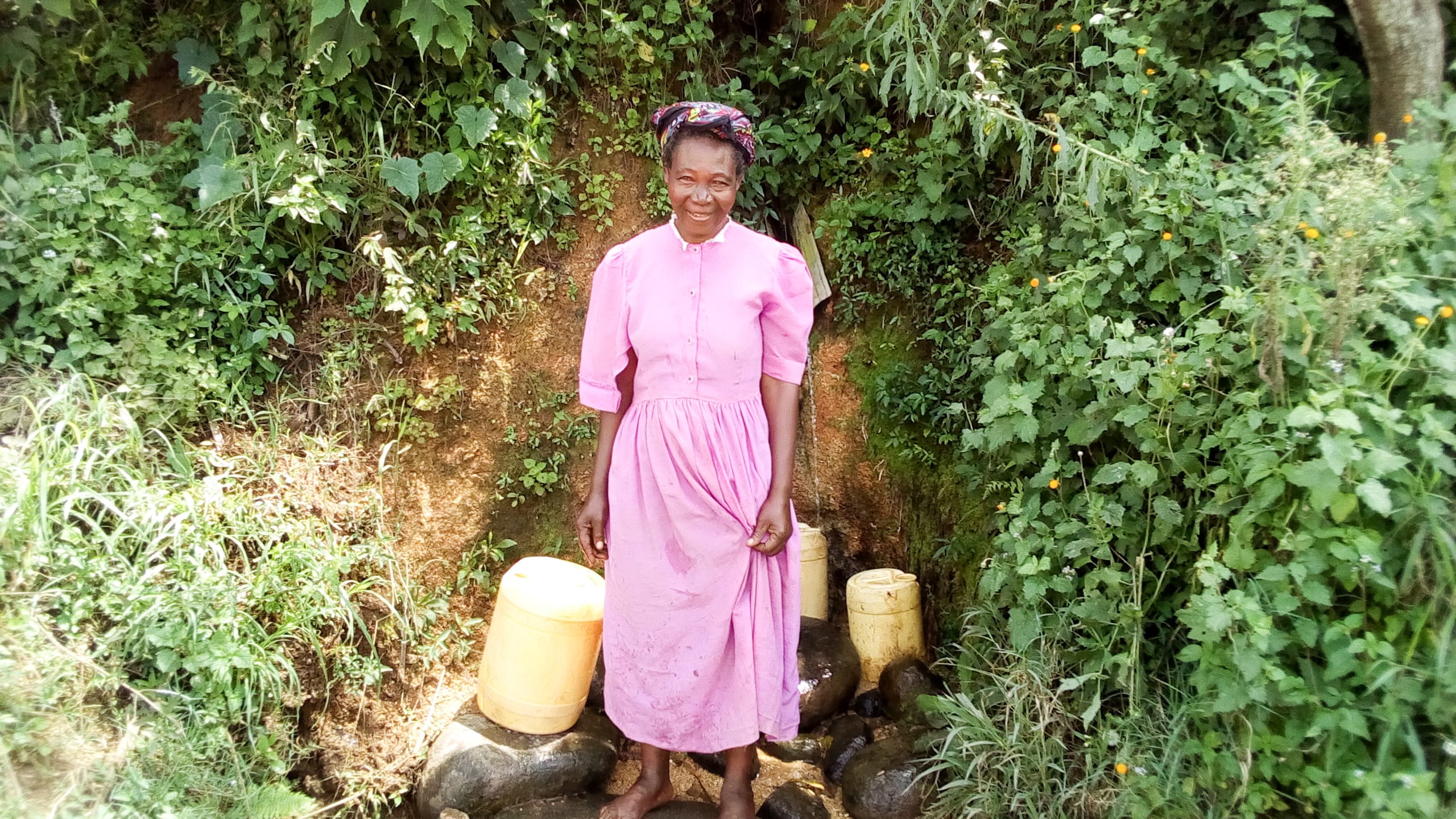Musango Community is located in Kakamega County, Kenya. There are 210 people here who rely on dirty water from Mwichinga Spring to meet their needs. The water pooling at this spring is completely open to contaminants.
People placed an iron sheet where water is flowing to help direct water into containers. This has actually rusted and further contaminates the water.
"I am forced to fetch the water for myself since sending my children means contaminating the water even further," shared Mrs. Rose Kangu.

"They can’t draw the water carefully to avoid contamination, especially when the wind has blown away the iron sheet that we have set as the drawing pipe. When the iron sheet has blown away, we draw the water from the ground," Rose continued.
"Our children cough a lot because they drink this water."
Water scarcity has resulted in wasted time. People take a long time to fill their containers at the spring. With water being contaminated, community members are suffered from water-related diseases, causing them to spend much on treatment.
Musango boasts of being big producers of sugarcane that’s sold and used to produce sugar at Mumias Sugar Company. Their fertile land yields a lot of crops even without the use of modern fertilizers. The people come together during funerals, weddings, harvesting, house construction and even for the celebration of a newborn baby.
This spring has flowed for decades. If it’s protected it will not only be much easier to fetch water, but that water will be much safer to drink. These sugarcane farmers will be allotted much more valuable time to care for their crops, their families, and themselves.
The larger part of this community is made up of children. This is a clear indication that if this spring is protected, it will serve many generations to come. The joy on their faces during this visit truly shown with hope about a protected spring.
What we can do:
Training
Community members will attend hygiene and sanitation training for at least two days. This training will ensure participants have the knowledge they need about healthy practices and their importance. The facilitator plans to use PHAST (Participatory Hygiene and Sanitation Transformation), CLTS (Community-Led Total Sanitation), ABCD (Asset-Based Community Development), group discussions, handouts, and demonstrations at the spring.
One of the most important topics we plan to cover is the handling, storage, and treatment of water. Having a clean water source will be extremely helpful, but it is useless if water gets contaminated by the time it’s consumed. Handwashing will also be a big topic.
"With our cows, dogs, cats, and poultry walking freely, our hygiene and sanitation has been compromised. Dirt is everywhere in our compounds. The sanitation of our latrines is not good either. We try to wash our clothes well but the water discolors them - especially when it’s rainy," reports Mr. Evans Mukhwana.
Training will also result in the formation of a committee that will oversee operations and maintenance at the spring. They will enforce proper behavior around the spring and delegate tasks that will help preserve the site, such as building a fence and digging proper drainage. The fence will keep out destructive animals, and the drainage will keep the area’s mosquito population at a minimum.
Sanitation Platforms
Less than half of households relying on Mwichinga Spring have a latrine of their own.
On the final day of training, participants will select five families that should most benefit from new latrine floors.
Training will also inform the community and selected families on what they need to contribute to make this project a success. They must mobilize locally available materials, such as bricks, clean sand, hardcore, and ballast. The five families chosen for sanitation platforms must prepare by sinking a pit for the sanitation platforms to be placed over. All community members must work together to make sure that accommodations and food are always provided for the work teams.
Spring Protection
When the field officer informed them of the intended training after the project implementation, they were so eager about it that they wanted to get a preview of what the training would be about. They promised to start working on improving their hygiene and sanitation even before the implementation and training. In conclusion, the community is so expectant and ready to participate in this process.
Protecting the spring will ensure that the water is safe, adequate and secure. Construction will keep surface runoff and other contaminants out of the water. With the community’s high involvement in the process, there should be a good sense of responsibility and ownership for the new clean water source.
Fetching water is predominantly a female role, done by both women and young girls. Protecting the spring and offering training and support will, therefore, help empower the female members of the community by giving them more time and efforts to engage and invest in income-generating activities.

 Protected Spring
Protected Spring
 Rehabilitation Project
Rehabilitation Project











































